Nylon Sling Inspection Checklist and Procedure
How to Inspect and Prevent Nylon Sling DamageNo matter how durable your nylon web sling is, eventually it will wear out and need to be replaced. From cuts and abrasions, to chemical and heat damage, there are several factors that can lead to a damaged sling. Inspecting a web lifting sling for damage before each use protects the load you are lifting and the people working on the job site. ASME B30.9 standards dictate that a synthetic web sling shall be removed from service if conditions such as the following are present on the sling:
|
Nylon Sling Inspection Checklist
Inspection: When there is a significant number of broken fibers, the sling should be taken out of service. Remember all of the individual fibers in a web sling contribute to the overall strength. If there are broken fibers of equal length, that indicates that the sling has been cut by an edge. Red core warning yarns may or may not be visible with cuts and are not required to show before removing slings from service. Prevention: Always protect synthetic slings from being cut by corners and edges by using wear pads or other devices.
Inspection: Punctures or areas where fibers stand out from the rest of the sling surface.
Inspection: Areas of the sling that look and feel fuzzy indicate that the fibers have been broken by being subject to contact and movement against a rough surface. Affected areas are usually stained.
Heat and Chemical Inspection: Melted or charred fibers anywhere along the sling. Heat and chemical damage can look similar and they both have the effect of damaging sling fibers and compromising the sling's strength. Look for discoloration and/or fibers that have been fused together and often feel hard or crunchy.
Knots Inspection: Never use a sling with a knot. Knots compromise the strength of all slings by not allowing all fibers to contribute to the lift as designed. Knots may reduce sling strength by up to 50%.
Inspection: Stitch patterns in web slings have been engineered to produce the most strength out of the webbing. If the stitching is not fully intact, the strength of the sling may be affected. Discontinue a sling if you find loose or broken threads in the main stitch patterns.
Questions? Our Hoist Central Parts Specialists are ready to help you find the solution to your crane needs or hoist parts. We are here to ensure that your order ships out as quickly as possible to keep you up and running with minimal downtime. |

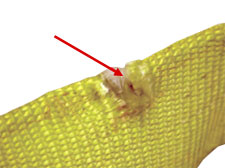 Surface and Edge Cuts
Surface and Edge Cuts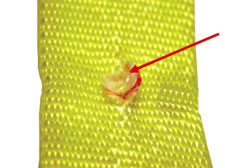 Holes, Snags, and Pulls
Holes, Snags, and Pulls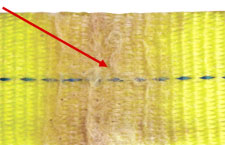 Abrasion
Abrasion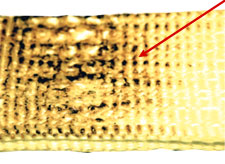
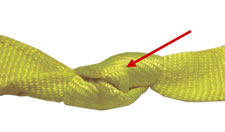
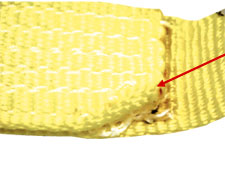 Broken/Worn Stitching
Broken/Worn Stitching